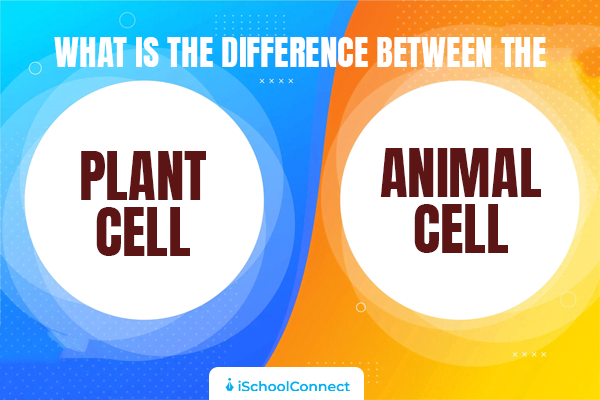Table of Contents
Two examples of natural resources that have existed for millions of years are coal and petroleum. There were other resources, like sunlight, even before god created the world. Regardless, we are all dependent on these resources to some extent. These assets, often known as natural resources, are essential for maintaining life on earth. Read on to know the difference between the two categories of natural resources: renewable and non-renewable.
Discover: Top 100 Science Quiz questions and answers for practice
What are Renewable Resources?
As the name suggests, these are the natural resources that, although being continuously consumed, do not become exhausted or depleted. These renew over a limited period by biological processes. Wind and sunlight are two examples.
Also : Science Questions | A complete board exams study guide
What are Non-Renewable Resources?
Due to ongoing human usage, these natural resources become exhausted and are neither renewed nor replaced, for example, groundwater, fossil fuels, and mineral ores.
Check out: Your perfect guide to the solar system diagram!
10 Differences Between Renewable and Non Renewable Energy Resources
Characteristics | Renewable Resources | Non-Renewable Resources |
| Definition | Natural resources that can be replenished in a human timescale. | Natural resources that cannot be replenished in a human timescale |
| Formation | Formed through natural processes, such as the Sun’s energy and wind, that can be replenished quickly | Formed through slow geological processes, such as the fossilization of plants and animals, that cannot be duplicated in a human timescale |
| Examples | Solar Energy, Wind Energy, Hydro Energy, Geothermal Energy, Bioenergy | Coal, Oil, Natural gas, Iron, Copper, Uranium |
| Supply | Unlimited supply as long as the natural processes do not get disrupted | Limited Supply, Cannot be Replenished |
| Environmental Impacts | Generally low, as long as they are managed sustainably | Can be significant, including Air Pollution and Water Pollution, Greenhouse gas emissions, Deforestation, and Soil erosion. |
| Energy Intensity | Low, as they are formed through natural processes | High, as significant energy is required to extract and process them |
| Costs | Very expensive | Cheap as compared to renewable resources but cost can increase over time if the resources become scarce |
| Economic Significance | Their demand is increasing with time | Already a huge demand as non-renewable resources provide energy and raw materials |
| Long-term Sustainability | High | Low |
| Sources | Sunlight, water, wind, and geothermal sources such as hot springs and fumaroles are examples of renewable resources. | Petrified fuels such as coal and petroleum are examples of nonrenewable energy sources. |
Explore: Canada’s leading programs in Masters of Renewable Energy
Impact of Human Activities on the Planet’s Renewable and Non-Renewable Resources
Nonrenewable energy sources are decreasing due to human activity. Infrastructure in today’s global energy grid relies extensively on nonrenewables daily, and our reliance on these resources is one of the primary reasons they will run out.
These factors motivate us to emphasize the development of renewable energy sources that can replace nonrenewables. As a result, the use of renewable energy sources has increased exponentially. Finally, human activity has significantly depleted nonrenewable resources, but it allows us to invest in more sustainable solutions for the future.
It’s vital to remember that you can choose the sort of energy resource you use. The more people choose renewable energy, the greater the need for them and the potential for long-term success.
When clients choose Inspire as their energy provider, they make a strong statement. Not only are they dramatically lowering their carbon footprint, but they are also raising the demand for renewable energy, which aids in its production.
Read more: Wonders of science and its effects on our life!
How Fast are Renewable Resources Growing?
Renewable energy continues its rapid expansion driven by technological advancements, falling costs, and growing climate change awareness. According to the International Renewable Energy Agency (IRENA), global renewable energy capacity grew by 295 GW or 9.6% in 2023, with the world adding record amounts of renewable power capacity. This represents an increase of over 50% compared to the capacity added in 2022.
Solar and wind power remain the primary drivers of this growth. Solar PV led with around 179 GW of new capacity in 2023, while wind energy added approximately 82 GW. China continues to be the largest contributor to renewable energy growth, followed by the European Union, United States, and Brazil.
Looking ahead, the International Energy Agency (IEA) projects that global renewable power capacity will grow by 2,400 GW between 2023-2028, equivalent to the total power capacity of China today. This growth is expected to be dominated by solar PV and wind technologies, which together should account for 95% of the expansion.
Learn about: All the important discoveries
Key Takeaways
- While fossil fuels are reliable and easily stored, they are becoming scarce. They contaminate the air we breathe, contribute to climate change, are hazardous to create, and kill wildlife when things go wrong.
- While renewable energy is less consistent (for example, we can only utilize solar electricity when the sun shines), renewable energy is always available.
- Renewable energy does not require millions of years to form and develop, nor does it need to be transported over land and water to be accessible.
- Renewable energy sources are better for the environment, and growing reliance on wind and solar power will help improve global air quality.
We hope you find this blog post to be both motivating and instructive. If you have any questions, please contact us here.
You may also express yourself by writing a comment below.
Liked this blog? Read next: General Science | What are the benefits of choosing this subject?
FAQs
Ques 1: What Are the Advantages of Renewable Energy for Small Businesses?
Answer 1: Lowering energy bills is perhaps the most important motivation for your company to become green. If you move to a renewable energy source, you can save hundreds of dollars on your monthly electricity expenses.
Tax Credits: As a reward for your green initiative, your company may be eligible for tax breaks from the local government. Furthermore, you may be able to cover at least 30% of the cost of installing a renewable energy system with the help of these incentives.
Ques 2: What exactly is zero- or low-carbon energy?
Answer 2: Nuclear electricity is not renewable, but it is zero-carbon(1), which means it emits little or no CO2, just like renewable energy sources. Nuclear energy provides a stable basis, which means it is not weather dependent and will significantly bring Britain to net zero status.
Ques 3. What exactly is energy storage?
Answer 3: Traditionally, energy distribution and consumption occur concurrently with its generation. However, sometimes the generated electricity is more than enough, and other times it is insufficient. The goal of energy storage is to balance the supply and demand for electricity.
Renewable storage allows for the utilization of the energy generated during off-peak hours during peak hours. Consider solar panels on a house’s roof. Although the sun does not shine at night, the energy created between sunrise and sunset exceeds the amount required to power an ordinary household. Extra energy stored can be used to compensate for the absence of sunlight during those hours.
Ques 4: What are the 5 differences between renewable and non renewable resources?
Answer 4: These are the 5 differences between renewable and non renewable resources:
| Comparison Index | Renewable Energy | Non-Renewable Energy |
| Depletion | Renewable resources can never be depleted. | Nonrenewable resources run out over time. |
| Sources | Sunlight, water, wind, and geothermal sources such as hot springs and fumaroles are examples of renewable resources. | Petrified fuels such as coal and petroleum are examples of nonrenewable energy sources. |
| Environmental Impact | Most renewable resources emit little carbon and have a small carbon footprint. | Nonrenewable energy has a significantly larger carbon footprint and emissions. |
| Cost | Renewable energy has a high initial cost. For example, creating power with renewable energy technologies is more expensive than generating them with fossil fuels. | Non-renewable energy has a lower initial investment. |
| Infrastructure Requirements | Infrastructure for harvesting renewable energy is prohibitively expensive and not easily accessible in most countries. | Cost-effective and accessible infrastructure is available for non-renewable energy across most countries |






